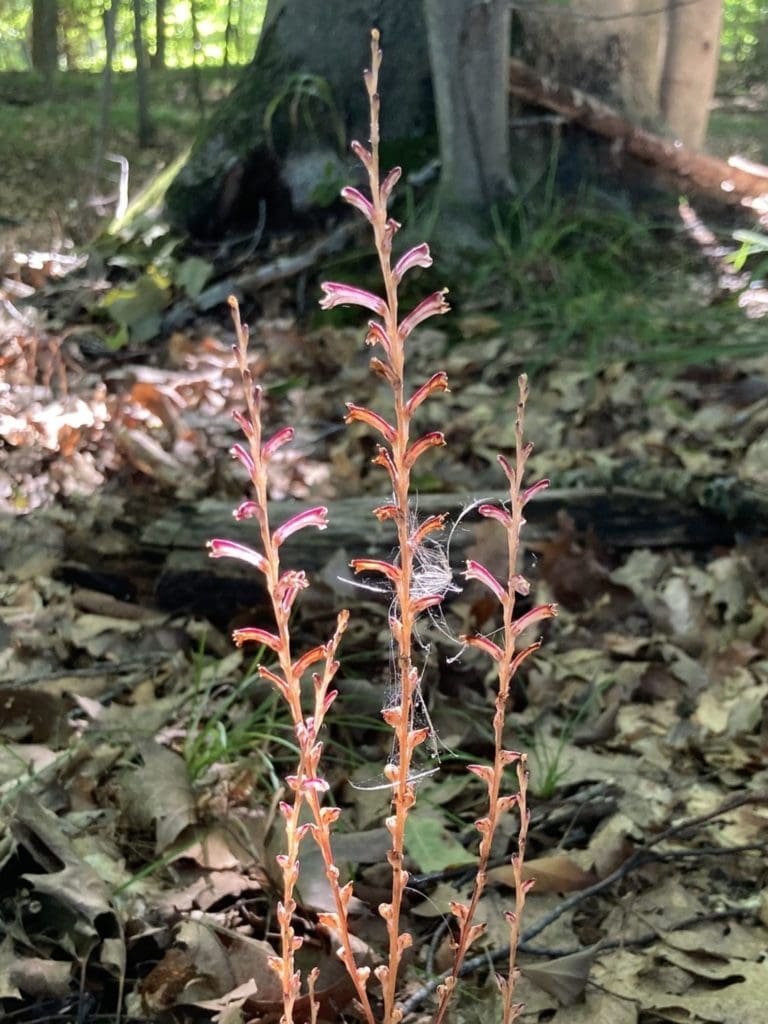Written by Max Kornetzke, land manager

Manitowoc and other eastern counties of Wisconsin are the western limit of the American Beech (Fagus grandifolia) trees natural range. American Beech is a climax species, meaning it is found as a dominant canopy species in stable, mature forest ecosystems. Beech trees have unique smooth, gray bark that makes them easy to identify in the field. They provide food and habitat for many species of birds and mammals and are also host plants for many different species of moths. These magnificent trees are also the sole host plant for another very unique organism: Beechdrops (Epifagus virginiana).
Beechdrops is an obligate parasite, which means it derives all of its nutrients by tapping into its host plant. In order to gain access to these nutrients, Beechdrops produce root-like structures called haustoria that attach themselves to the root system of the Beech tree. Don’t worry though, this doesn’t harm the tree! Since they get all their nutrients from their host plant, they don’t need to photosynthesize. This means they lack the green chlorophyll pigments that photosynthetic plants make and instead they come in interesting shades of cream, red and copper.
If you find yourself amongst some Beech trees in the waning months of summer, make sure to scan the forest floor for this strange wildflower and marvel at the complex relationships of our native plant communities!

